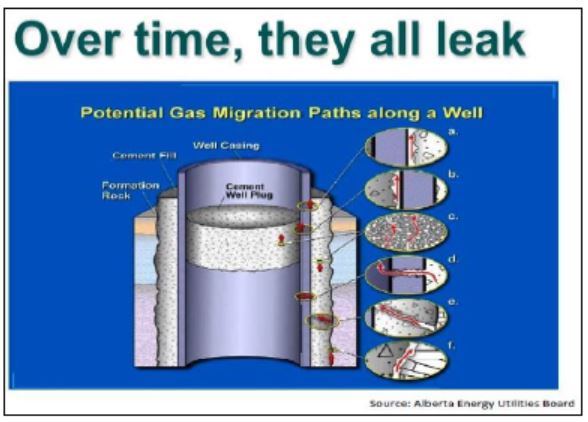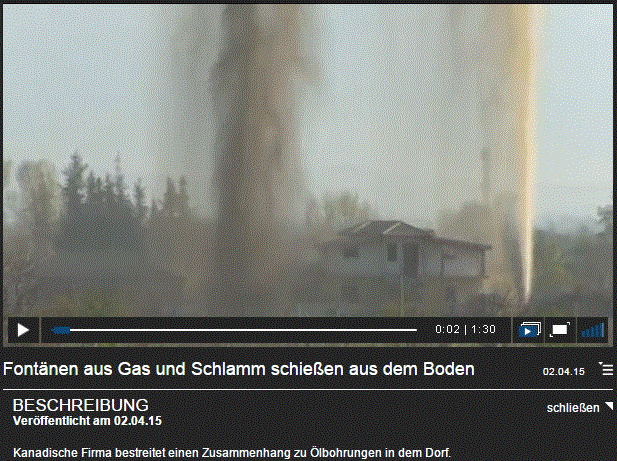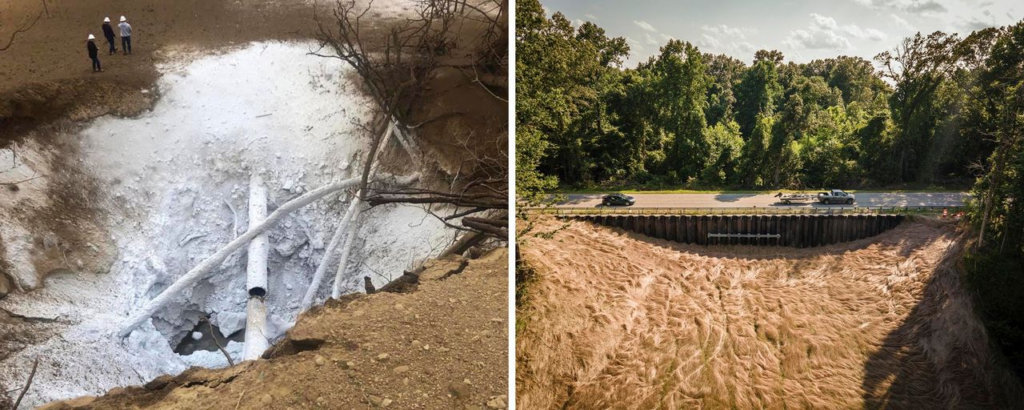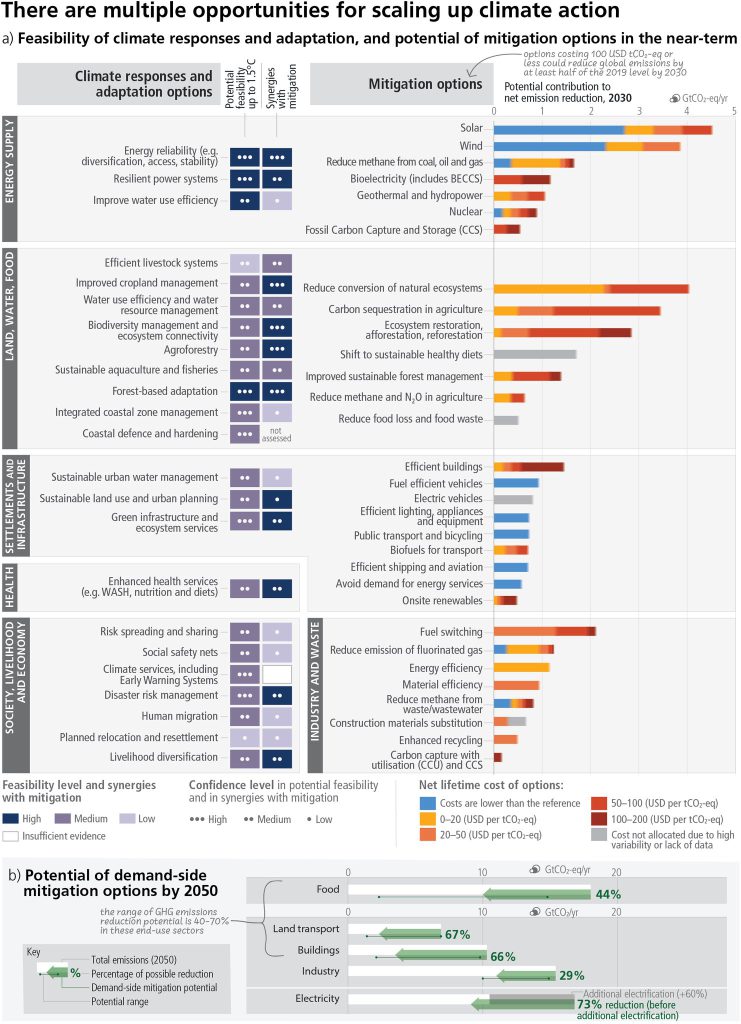FIRST, A REALITY CHECK:
2006 May: The Role of the Upper Geosphere in Mitigating CO2 Surface Releases in Wellbore Leakage Scenarios ![]() USA Dept Energy removed the paper. Access it here. Think of the many millions high pressure fracs in oil and gas fields across in North America, after this data was presented!
USA Dept Energy removed the paper. Access it here. Think of the many millions high pressure fracs in oil and gas fields across in North America, after this data was presented!![]()

Source: USA Dept Energy
2006 June: Possible indicators for CO 2 leakage along wells by Bachu and Watson, 8th International Conference on Greenhouse Gas Control Technologies, Trondheim, Norway
Abstract
Implementation of CO2 storage in geological media requires a proper assessment of the risk of CO2 leakage from storage sites, particularly through and along wellbores. One method of assessing the potential for CO2 leakage through wells is by mining databases that usually reside with regulatory agencies for information about the condition of existing wells. The Alberta Energy and Utilities Board (EUB![]() Now AER
Now AER![]() ) collects from industry and stores information about more than 315,000 oil and gas wells, and injection wells in the province of Alberta, Canada. A preliminary analysis of this information indicates that ~4.6% of these wells have recorded surface casing vent flow (SCVF) or gas migration (GM) through wellbore annuli or outside casing. Data analysis shows that there is a correlation between these occurrences and economic activity, technology changes and regulatory changes. The analysis further shows that the source of SCVF/GM is mostly in relatively shallow strata, with the gas originating at less than 700 m depth in ~90% of the occurrences. This information is representative for potential gas leakage along wellbores in the shallower part of mature sedimentary basins, and can be used in stochastic models for assessing the risk of leakage from CO2 storage sites in geological media.
) collects from industry and stores information about more than 315,000 oil and gas wells, and injection wells in the province of Alberta, Canada. A preliminary analysis of this information indicates that ~4.6% of these wells have recorded surface casing vent flow (SCVF) or gas migration (GM) through wellbore annuli or outside casing. Data analysis shows that there is a correlation between these occurrences and economic activity, technology changes and regulatory changes. The analysis further shows that the source of SCVF/GM is mostly in relatively shallow strata, with the gas originating at less than 700 m depth in ~90% of the occurrences. This information is representative for potential gas leakage along wellbores in the shallower part of mature sedimentary basins, and can be used in stochastic models for assessing the risk of leakage from CO2 storage sites in geological media.
Introduction
Carbon dioxide capture and geological storage (CCGS) is a means for climate change mitigation that is technologically feasible and with immediate potential for implementation. A particular critical issue that needs addressing before large-scale implementation is that of storage safety. A basic premise is that some CO2 leakage will occur over time, the main question thus being what is an acceptable level of cumulative leakage over time and at all sites that still meets the needs for stabilization of CO2 concentration in the atmosphere [1, 2].
Storage safety refers to the potential harm to other resources, equity and life that a CO2 leak may entail.
The probability and effects of leakage from CO2 storage sites need assessment by both the operator and regulatory agency during the application and permitting process, during the operational phase and after site abandonment [3]. Any fluid in the subsurface, especially a buoyant one like CO2 , will migrate laterally within the injection unit and may leak upwards across formations through faults and fractures and/or defective wells [1, 4]. The potential for CO2 leakage through fractures and faults can be well managed through proper geological characterization and selection of the storage site, and through proper operating procedures. Managing the potential for CO2 leakage through wells is more difficult. Exploration and production wells have been drilled, completed and abandoned since the middle of the 19th century, with variable technology and materials, and with no or under variable regulatory regimes. Well materials (cements, steel, elastomers, etc.) will or may degrade over time, particularly in the presence of corrosive agents such as saline formation water and CO2 [5, 6]. Thus, the potential for leakage through existing wells needs to be assessed for site selection and remediation. New wells will also be subjected to the same in-situ conditions as the existing wells.![]() Dr Tony Ingraffea subsequently found new wells to be worse leakers than older ones, which makes sense given the oil and gas industry’s relentless greed, lies, and demanding degegulation which has been consistently granted by our deregulators, notably Alberta’s “No Duty of Care” legally immune AER.
Dr Tony Ingraffea subsequently found new wells to be worse leakers than older ones, which makes sense given the oil and gas industry’s relentless greed, lies, and demanding degegulation which has been consistently granted by our deregulators, notably Alberta’s “No Duty of Care” legally immune AER.![]() …
…
2007: Presentation on above 2006 paper Factors Affecting or Indicating Potential Wellbore Leakage by Watson and Bachu at the Alberta regulator, AER (when it was EUB), no less!

2007: Mazuku – Deadly CO2 pockets 1:31 Min.![]() Surely officials and experts we pay at the Geological Surveys of Alberta and Canada have the time and budget to warn us about CO2’s deadly nature. I do not get paid, yet have been posting on its harms and risks for years.
Surely officials and experts we pay at the Geological Surveys of Alberta and Canada have the time and budget to warn us about CO2’s deadly nature. I do not get paid, yet have been posting on its harms and risks for years.![]()
2008: Bachu, S., Buschkuehle, B.E., Haug, K. and Michael, K. (2008): Subsurface characterization of the Edmonton-area acid-gas injection operations; Energy Resources Conservation Board, ERCB![]() Now AER
Now AER![]() /AGS Special Report 92, 134 p.
/AGS Special Report 92, 134 p.
![]() Currently publicly available here: https://ags.aer.ca/publication/spe-092. In case AER removes the report from public access, I uploaded it to my website because it’s important.
Currently publicly available here: https://ags.aer.ca/publication/spe-092. In case AER removes the report from public access, I uploaded it to my website because it’s important.
CO2 is an acid gas.![]()
From Page 88:
Figure 59 shows the extent of the Acheson original Blairmore T and subsequent St. Albert-Big Lake Ostracod A pools, and of the Strathfield (undefined) gas reservoir in the context of lithofacies changes in the Lower Mannville Basal Quartz and Ellerslie formations. When approval was granted for acid gas injection at Acheson, the regulatory agency required the operator to file annually with EUB and each other operator in the Acheson Blairmore T and St. Albert-Big Lake Ostracod A pools progress reports that “shall include the impact of acid gas injection on the performance of offsetting producing wells”. In March 2004 the operator at Acheson reported that CO2 was detected in 2003 in well 10-22-53-26W4 in the St. Albert-Big Lake Ostracod A pool, located at 3,625 m north from the acid-gas injection well. No H2S has been detected in the produced gas. Since at Acheson the average composition of the acid gas is 87% CO2 and 11% H2S (Table 14), with H2S being denser and more viscous than CO2, it is expected that CO2 would show first at a producing well. In addition, diagenetic processes within the reservoir could have reduced the H2S concentration in the injected acid gas as a result of pyrite precipitation, if an iron source was available. The issue was brought to EUB’s attention and was heading to a hearing, but the operator at Acheson has indicated to the regulatory agency that it has initiated an Appropriate Dispute Resolution process with the operator of the offset producing well to address the issue of CO2 breakthrough, and that this situation “will be addressed pursuant to the terms of the Mediated Settlement Agreement”.
This case shows that, after 13 years of injection, CO2 has migrated northward a distance of [nearly 4 km] mostly under the combined drive of injection and production. The drive into the St. Albert-Big Lake Ostracod A gas pool has increased lately with the large spike in gas production from this pool (Figure 57b). There are five producing wells much closer to the acid-gas injection well (Figure 59) that did not report CO2 breakthrough, but these wells are owned by the same operator that operated until recently the Acheson acid-gas injection site. If acid gas broke through at any of these wells, it is most likely that the operator just stripped the acid gas from the sour reservoir gas and re-injected it, as the produced gas in this area is sour to begin with. Understanding the migration path and fate of the injected acid gas at Acheson requires a separate study that is beyond the scope of this report.
From the Abstract:
Lateral migration within the gas reservoir has been recorded in 2003 at Acheson, where, after 13 years of injection, CO2 has been detected at an offset producing well at 3,625m ![]() 3.625 Kilometres!
3.625 Kilometres!![]() distance in the same gas pool. However, migration within the same unit, particularly in a gas reservoir, is expected and its occurrence should not come as a surprise. …
distance in the same gas pool. However, migration within the same unit, particularly in a gas reservoir, is expected and its occurrence should not come as a surprise. …
….the possibility for upward leakage of acid gas exists along wells that were improperly completed and/or abandoned, or along wells whose cement and/or tubing have degraded or may degrade in the future as a result of chemical reactions with formation brine and/or acid gas. A review of the status and age of wells that penetrate the respective injection unit at each site shows that most wells were drilled in the 1950s and 1960s, and that the majority of wells are abandoned. …
2011: A Case History of Tracking Water Movement Through Fracture Systems in the Barnett
“As well density increases it becomes increasingly probable that wells will communicate either through previously created fractures or through adjacent wellbores and then into previously created fractures.”
… In 2003 the Kerrs dug a gravel pit to service EnCana’s oil roads. After the pit promptly filled with water, the Kerrs observed strange doings including foaming, discolouration and hissing bubbles. They also discovered the carcasses of dead ducks, a rabbit and a goat by the pit.
When several gaseous explosions rocked the pond in 2007, the couple moved to Regina. “We have a problem and no [one] wants to properly investigate it,” Jane Kerr told Canadian Business at the time.
Although the Saskatchewan government promised to do a year-long study on the farm’s air, water and soil, the Kerrs say it never happened. What they got instead were a few ad hoc day-long tests and nothing more.
….the Kerrs then hired Paul Lafleur of Petro-Find Geochem to do some serious monitoring.
Unlike so-called government and industry experts intent on declaring the safety of carbon cemeteries before the evidence is in, Lafleur found lots of CO2.
Using tried and true carbon sensors designed to detect oil deposits, Lafleur discovered dangerously high concentrations of the gas on the Kerr’s property.
Seeping dangers cited
In one location alone Lafleur detected concentrations as high as 110,607 parts per million (ppm), twice the amount needed to asphyxiate a person. Near the Kerr’s home he also recorded concentrations of 17,000 ppm, a level “that far exceed the threshold level for health concerns.”![]() CO2 doesn’t just kill, CO2 impairs cognitive function.
CO2 doesn’t just kill, CO2 impairs cognitive function.![]()
As a consequence “CO2 could enter the home in dangerous concentrations through the crawl space due to negative pressures caused by a natural gas heating furnace.”
Given that Cenovus’s closest injection well lies a mile away from the Kerr home, Lafleur concluded that the CO2 was probably seeping through open fractures and faults that intersect the Weyburn field. In other words, there were cracks in the cemetery.
In addition a Saskatchewan lab confirmed that the CO2 found at Kerr’s place clearly originated from “the CO2 injected into the Weyburn reservoir.” …
2012: CO2 in Stream, Dead Ducks Prompt Wyo. DEQ Citation against Anadarko
2012: Earthquake risk for carbon capture and storage schemes
Move over fracking: carbon capture and storage schemes (CCS) are more likely to trigger earthquakes, warns the US National Research Council (NRC). Meanwhile, a separate study warns that quake-fractured rocks could undermine CCS efforts by allowing the trapped gas to leak back into the atmosphere.
Carbon sequestration involves pumping CO2 at high pressure below ground and trapping it in porous rocks at depths of 1 to 4 kilometres. ….carbon capture and storage could see billions of cubic metres of fluid injected below ground – potentially enough to trigger more and larger quakes, the report concludes.
Even if those quakes do not damage property or put lives at risk, they could undermine carbon capture schemes, says Mark Zoback, a geophysicist at Stanford University in California. “If you trigger an earthquake, you are threatening the seal of the repository,” he says. “CO2 is buoyant and it wants to rise and get out.” …
2012: Peer reviewed PNAS paper: Earthquake triggering and large-scale geologic storage of carbon dioxide
Despite its enormous cost, large-scale carbon capture and storage (CCS) is considered a viable strategy for significantly reducing CO2 emissions associated with coal-based electrical power generation and other industrial sources of CO2. … We argue here that there is a high probability that earthquakes will be triggered by injection of large volumes of CO2 into the brittle rocks commonly found in continental interiors. Because even small- to moderate-sized earthquakes threaten the seal integrity of CO2 repositories, in this context, large-scale CCS is a risky, and likely unsuccessful, strategy for significantly reducing greenhouse gas emissions

2016: 3.8M earthquake location changed from Yorkton to Esterhazy, Saskatchewan; Numerous injection wells there. Caused two hour power outage for several communities. Unbelievable quote by seismologist Dr. Honn Kao, Geological Survey of Canada: “Man-made activity will not cause this kind of magnitude event unless it’s nuclear explosion”![]() Search my website for “frac quake” or “earthquake” to see a few examples of “man-made” frac’ing and waste injection causing much bigger quakes than this one in SK, that appears was also caused by “man-made” activities.
Search my website for “frac quake” or “earthquake” to see a few examples of “man-made” frac’ing and waste injection causing much bigger quakes than this one in SK, that appears was also caused by “man-made” activities.![]()

2018 US Geological Survey: Induced Seismicity Associated with Carbon Dioxide Geologic Storage
… As the pressure from the injected liquid builds, the brittle rock layer—known as a caprock—can crack, allowing the CO2 to seep out back into the atmosphere. It’s also possible that CO2 could leak into drinkable groundwater if injected at shallow depth near an aquifer. According to Hager, both earthquakes and leaks from CO2 injection can be managed by avoiding sites near faults in caprocks and by properly mapping sites near drinking water.![]() Does the energy industry manage anything “properly” to prevent earthquakes, other harms and protect our drinking water? Some companies like Encana/Ovintiv intentionally illegally frac’d right into community drinking water aquifers with lying by lawyers, regulators, politicians, experts and judges to enable the harms.
Does the energy industry manage anything “properly” to prevent earthquakes, other harms and protect our drinking water? Some companies like Encana/Ovintiv intentionally illegally frac’d right into community drinking water aquifers with lying by lawyers, regulators, politicians, experts and judges to enable the harms.![]()

LEFT: The CO2 pipeline rupture. RIGHT: Vehicles pass over the pipeline explosion site in Satartia in July. Yazoo County Emergency Management Agency/Rory Doyle for HuffPost
2021: Honest Government Ad, Carbon Capture and Storage FUNNY!
The Australien Government has made an ad about Carbon Capture and Storage, and it’s surprisingly honest and informative.
… Any activities that involve pumping fluids into or out of the ground have the potential to induce earthquakes by changing the stresses within the Earth’s crust. Examples include hydraulic fracturing (“fracking”) in the oil and gas industry, geothermal wells, groundwater management, and carbon sequestration by injecting carbon dioxide deep underground. Characterizing and predicting the conditions in which rocks fail is key to the sustainability of these activities.
“It’s important to understand what’s going to make the rocks break,” Brodsky said.
Geologic carbon sequestration (storing carbon dioxide in underground geologic formations) could be a major tool for fighting global climate change, but induced earthquakes could potentially scuttle the technology, she said.
“Induced earthquakes could be the Achilles heel of carbon sequestration. If the rocks fail you no longer have sequestration—it breaks the confinement of the carbon dioxide, and you’ve just wasted time and money while getting no closer to a climate change solution,” Brodsky explained. ![]() But the oil and gas industry gets to keep raping out $billions in profits, under the guise of cleaning up their pollution via quake-risky CO2 sequestration, or worse, lying about it and using the CO2 to frac for oil and gas, or for enhanced oil recovery, while lying to and conning the public about CCS being for pollution mitigation.
But the oil and gas industry gets to keep raping out $billions in profits, under the guise of cleaning up their pollution via quake-risky CO2 sequestration, or worse, lying about it and using the CO2 to frac for oil and gas, or for enhanced oil recovery, while lying to and conning the public about CCS being for pollution mitigation.![]() …
…
… “This event was caused by wastewater disposal,” said Ryan Schultz, a Canadian seismologist who helped conduct the research while at Stanford University in California. His paper on the event, written with colleagues at the University of Alberta and Natural Resources Canada, was published Thursday morning in the journal Geophysical Research Letters.
In a release Thursday evening on Twitter, the energy regulator said the protection order was issued after its own investigation.
“An investigation conducted by the Alberta Geological Society, a branch of the AER, has concluded that Obsidian’s disposal operation induced the seismic events,” it said.
… After the record-breaking quake occurred, the Alberta Geological Society attributed it to natural causes. The centre of the quake, then estimated to be six kilometres underground, was thought too deep and too far away from oilpatch activity in time and space to have been generated by industry.
Not so, said Schultz.
A closer and more thorough look at the data brought the centre of the quake up to about four kilometres beneath the surface. At some point, the regulator’s catalogue of Alberta quakes was changed to reflect that figure.
Similarly, Schultz said a look at previous research on so-called “induced seismicity” revealed long lag times between deep-well water injection and earthquakes.
A previous disposal site in Alberta started quaking three years after pumping began, Schultz said. A Dutch disposal well didn’t start causing earthquakes for decades.
As well, history shows deep water disposal can cause earthquakes up to 20 kilometres away. Alberta’s November earthquakes were nowhere near that distant.
“The clusters of earthquakes were right on top of a deep disposal well,” Schultz said.
His paper suggests that the injected water forced itself between the two sides of a fault deep in the earth. That water was enough to reduce the friction holding the two sides together and eventually resulted in a slippage that shook the surface.
Statistical analysis of the correlation between the quakes and the underground pumping was conclusive, Schultz said.
“We had a confidence somewhere between 89 and 97 per cent just in the timing,” he said. “There is enough information to start making these kinds of links.”
Schultz said the findings could have big implications for Canada’s and Alberta’s climate change plans.
Both jurisdictions favour reducing the climate impact of the province’s energy industry by pumping vast amounts of waste carbon dioxide deep underground, much as wastewater is injected. So-called carbon capture and storage could have the same seismic effects as deep wastewater disposal, Schultz said.
“If carbon capture is going to be done at a scale that is going to combat climate change, then significant amounts of volume need to be put in the ground,” he said. “You might expect then also getting these types of earthquakes the more volume that you store.”
***
2023 IPCC shows CCS is a lousy expensive mitigation option:

***
Dr. Jonathan Foley@GlobalEcoGuy:
Well, ah, that’s not so good. Especially if we are pouring billions of tax dollars into these kinds of technologies.
“…the company declined to share how much carbon it has captured or how much energy, on average, the process has used.”
END REALITY CHECK
Underground carbon storage is the future in Canada. But could it cause earthquakes? Researcher with Geological Survey of Canada recently awarded $1.5M to study the issue by Julia Wong CBC, Oct 29, 2023
Canada is investing heavily in carbon capture and storage as a way to fight climate change. Now, research is underway to determine if that storage — in the form of injecting carbon dioxide underground — could lead to earthquakes.
Honn Kao, a seismologist and research scientist at the Geological Survey of Canada, recently received a $1.5 million grant from Natural Resources Canada to study the issue.
Carbon capture and storage aims to reduce the carbon dioxide that is emitted by an industrial operation burning fossil fuels by capturing CO2 at the source. Instead of being released to the Earth’s atmosphere as a gas, it’s compressed and injected underground as a liquid.
Kao and his team will be monitoring earthquake activity from underground carbon storage facilities over five years, studying the possible effects of the injections and analyzing what can be done to mitigate or eliminate those risks.

“What kind of injection scenarios of carbon storage may actually increase the seismic risk,” he said.
“This is an important issue because if the induced earthquakes happen to be a significant one that actually becomes large enough for the local communities to feel it or even have some damage … then the regulatory agencies will have to shut the injection operation down.”![]() There are many more risks caused by injecting industry’s CO2 than just causing damaging earthquakes. Refer to the above REALITY CHECK for a few examples, and below on CO2 causing cognitive impairment.
There are many more risks caused by injecting industry’s CO2 than just causing damaging earthquakes. Refer to the above REALITY CHECK for a few examples, and below on CO2 causing cognitive impairment.![]()
Induced earthquakes
Earthquakes caused by injecting a liquid underground — also known as induced seismicity — have been well documented in the U.S. and Canada when it comes to fracking and wastewater disposal, including by Kao in B.C.’s Peace region.
“Based on our past research, we realized that when you do large-scale fluid injection into subsurface formations, the stress perturbation caused by all these injected fluids can be enormous … which eventually leads to the occurrence of earthquakes,” Kao said.![]() CO2 is a fluid and has been/is used by companies to frac for oil and gas, and in enhanced oil recovery.
CO2 is a fluid and has been/is used by companies to frac for oil and gas, and in enhanced oil recovery.![]()
- Oil and gas activity was catalyst for Peace River earthquakes in 2022, study finds
- Fracking triggers 90% of large quakes in B.C., Alberta oil and gas patch
“Although the carbon injection or the carbon storage itself is not a widespread phenomenon here yet, the physics is actually the same.”
Kao said, to date, there have been no major carbon injection-induced earthquakes in Canada or elsewhere in the world, but he does expect small events to happen. The risk of activity is generally higher near tectonic plate boundaries, he said.
If a major earthquake ruptures through cap rock atop of a carbon storage area, it could create a pathway for injected CO2 to escape, he said.
Seismic monitoring near storage facilities
According to the Canada Energy Regulator, there are 10 carbon capture and storage projects operating in Canada: six in Alberta and four in Saskatchewan. The regulator said four other projects are confirmed to move forward in the next five years.
Kao’s research will examine real-time earthquake activity. When a seismic event happens, his team works backwards to figure out where it stemmed from and whether it is injection-related. If it is the latter, the team will look into what caused the induced event and whether a fault line might be involved.
Erik Nickel is the chief operating officer of the Petroleum Technology Research Centre, which oversees the Aquistore carbon storage facility in Estevan, Sask. Aquistore is one of several sites that will be monitored by Kao’s team.
“It would make a lot of sense to include us in there because of our history of not really having much seismic activity,” ![]() Sounds to me like some earthquakes are happening there, with Nickel using slippery words.
Sounds to me like some earthquakes are happening there, with Nickel using slippery words.![]() Nickel said, adding the site sits on flatlands and is not near the boundary of tectonic plates.
Nickel said, adding the site sits on flatlands and is not near the boundary of tectonic plates.
Carbon dioxide is captured from a nearby coal-fired power plant and the carbon is compressed then piped to an injection well approximately three kilometres away from the power plant.
- Cement is everywhere. The industry is turning to carbon capture to curb emissions, and it’s not alone
- Imperial Oil hoping Cold Lake carbon capture project will be running before 2030
The carbon is subsequently injected 3.4 kilometres underground.
So far, approximately 560,000 tons of liquefied carbon dioxide have been pumped into a sandstone formation below the surface of the Earth. The site is consistently tracked by a slew of equipment, including seismic monitors, groundwater monitoring and GPS.
“Obviously we do not want to cause any man-made earthquakes to happen,” Nickel said.![]() If that were true, companies and geological survey staff would not be lying to us, and they would not frac, and would not inject waste CO2.
If that were true, companies and geological survey staff would not be lying to us, and they would not frac, and would not inject waste CO2.![]()
Nickel is skeptical that carbon storage will bring serious earthquake risks, but said that he understands why this research needs to be done at this point in time.
“If CO2 injection and CCS becomes a large [greenhouse gas] mitigation strategy for Canada … it’s very important to understand the nature and scope of [all risks],” he said.
“Right now it looks as though in stable areas such as this, that it won’t be a large risk. But certainly in other areas, it could be. So I think before it rolls out, understanding the stress fields and the factors that lead to seismic activity would be important.”![]() Whatever does he mean? “Before it rolls out?” It’s already rolled out to the tune of stealing billions of dollars from Canadians to pay for industry’s scam to keep polluting and making billions of dollars in profit doing so.
Whatever does he mean? “Before it rolls out?” It’s already rolled out to the tune of stealing billions of dollars from Canadians to pay for industry’s scam to keep polluting and making billions of dollars in profit doing so.![]()
As for Kao, he said that this research looks at the bigger picture.![]() Translation: Figure out the best ways to con Canadians to accept (give social licence to) the deadly risks of industry injecting massive amounts of CO2?
Translation: Figure out the best ways to con Canadians to accept (give social licence to) the deadly risks of industry injecting massive amounts of CO2?![]()
“We know injection has a lot of benefits,” Kao said.
“Fighting climate change is important and by doing so, what kind of price do you want to pay and can you accept this kind of risk?”
A few of the comments:
Mark Lawrence:
it takes a special breed to knowingly and deliberately ruin their own habitat – not too bright folks
Tom Campbell:
Despite its long history, carbon capture is a problematic technology. A new IEEFA study reviewed the capacity and performance of 13 flagship projects and found that 10 of the 13 failed or underperformed against their designed capacities, mostly by large margins.
Lynette Browne:
Very large margins if I recall correctly – something like 10% efficient compared to 80-90% reported by industry.
Gary Wootton:
Saskatchewan’s participation consisted of blowing through $1.4B in taxpayer money for a single CCS project which captures 90% of CO2 when it’s operating which is 70% of the time. After that, they walked away from CCS choosing to convert it’s coal fired power plants to natural gas. The most they have done is make CCS look bad: this project is mentioned by name by other coal power operators when explaining why they can’t/won’t use CCS.
Rick Clark:
fossil fuel greenwash–not a feasible solution
Walter Vrbetic:
“The Institute for Energy Economics and Financial Analysis has estimated that most of the total captured carbon throughout history found its use in enhanced oil recovery—approximately 80–90 percent. Only a small proportion of carbon capture projects (approximately 10–20 percent) have stored carbon in dedicated geological structures without using it for oil and gas production”
If only it worked…
“World’s biggest carbon capture plant running at one third capacity, Chevron Australia reveals” By energy reporter Daniel Mercer
![]()
Refer also to:
2020: Atmospheric CO2 levels can cause cognitive impairment
As the 21st century progresses, rising atmospheric carbon dioxide (CO2) concentrations will cause urban and indoor levels of the gas to increase, and that may significantly reduce our basic decision-making ability and complex strategic thinking, according to a new CU Boulder-led study.
By the end of the century, people could be exposed to indoor CO2 levels up to 1400 parts per million–more than three times today’s outdoor levels, and well beyond what humans have ever experienced.
It’s amazing how high CO2 levels get in enclosed spaces. It affects everybody–from little kids packed into classrooms to scientists, business people and decision makers to regular folks in their houses and apartments.”
Kris Karnauskas, CIRES Fellow, Sssociate Professor, CU Boulder
Karnauskas is also the lead author of the new study published today in the AGU journal GeoHealth
Shelly Miller, professor in CU Boulder’s school of engineering and coauthor adds that “building ventilation typically modulates CO2 levels in buildings, but there are situations when there are too many people and not enough fresh air to dilute the CO2.”
CO2 can also build up in poorly ventilated spaces over longer periods of time, such as overnight while sleeping in bedrooms, she said.
Put simply, when we breathe air with high CO2 levels, the CO2 levels in our blood rise, reducing the amount of oxygen that reaches our brains. Studies show that this can increase sleepiness and anxiety, and impair cognitive function.
We all know the feeling: Sit too long in a stuffy, crowded lecture hall or conference room and many of us begin to feel drowsy or dull. In general, CO2 concentrations are higher indoors than outdoors, the authors wrote.
And outdoor CO2 in urban areas is higher than in pristine locations. The CO2 concentrations in buildings are a result of both the gas that is otherwise in equilibrium with the outdoors, but also the CO2 generated by building occupants as they exhale.
Atmospheric CO2 levels have been rising since the Industrial Revolution, reaching a 414 ppm peak at NOAA’s Mauna Loa Observatory in Hawaii in 2019.
In the ongoing scenario in which people on Earth do not reduce greenhouse gas emissions, the Intergovernmental Panel on Climate Change predicts outdoor CO2 levels could climb to 930 ppm by 2100. And urban areas typically have around 100 ppm CO2 higher than this background.
Karnauskas and his colleagues developed a comprehensive approach that considers predicted future outdoor CO2 concentrations and the impact of localized urban emissions, a model of the relationship between indoor and outdoor CO2 levels and the impact on human cognition.
They found that if the outdoor CO2 concentrations do rise to 930 ppm, that would nudge the indoor concentrations to a harmful level of 1400 ppm.
“At this level, some studies have demonstrated compelling evidence for significant cognitive impairment,” said Anna Schapiro, assistant professor of psychology at the University of Pennsylvania and a coauthor on the study.
“Though the literature contains some conflicting findings and much more research is needed, it appears that high level cognitive domains like decision-making and planning are especially susceptible to increasing CO2 concentrations.”
In fact, at 1400 ppm, CO2 concentrations may cut our basic decision-making ability by 25 percent, and complex strategic thinking by around 50 percent, the authors found.
The cognitive impacts of rising CO2 levels represent what scientists call a “direct” effect of the gas’ concentration, much like ocean acidification. In both cases, elevated CO2 itself–not the subsequent warming it also causes–is what triggers harm.
The team says there may be ways to adapt to higher indoor CO2 levels, but the best way to prevent levels from reaching harmful levels is to reduce fossil fuel emissions.
This would require globally adopted mitigation strategies such as those set forth by the Paris Agreement of the United Nations Framework Convention on Climate Change.
Karnauskas and his coauthors hope these findings will spark further research on ‘hidden’ impacts of climate change such as that on cognition.
“This is a complex problem, and our study is at the beginning. It’s not just a matter of predicting global (outdoor) CO2 levels,” he said. “It’s going from the global background emissions, to concentrations in the urban environment, to the indoor concentrations, and finally the resulting human impact. We need even broader, interdisciplinary teams of researchers to explore this: investigating each step in our own silos will not be enough.”
Source: University of Colorado at Boulder
Journal reference: Karnauskas, K. B., et al. (2020) Fossil fuel combustion is driving indoor CO2 toward levels harmful to human cognition. GeoHealth. doi.org/10.1029/2019GH000237.
***

Poster by Will Koop, BC Tap Water Alliance
